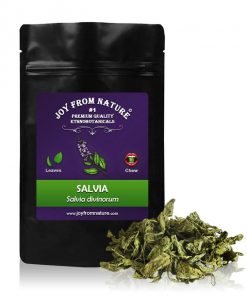You may have heard stories of people traveling to foreign destinations to experience taking Ayahuasca a psychoactive brew.
Typically, these anecdotes tend to focus on the immediate effects that take place during a “trip,” some of which are enlightening, while others are downright distressing.
However, scientists have uncovered several long-term health benefits of taking Ayahuasca.
This article reviews Ayahuasca, including its negative and positive effects on health.

Ayahuasca — also known as the tea, the vine, and la purga — is a brew made from the leaves of the Psychotria viridis shrub along with the stalks of the Banisteriopsis caapi vine, though other plants and ingredients can be added as well (1Trusted Source).
This drink was used for spiritual and religious purposes by ancient Amazonian tribes and is still used as a sacred beverage by some religious communities in Brazil and North America, including the Santo Daime.
Traditionally, a shaman or curandero — an experienced healer who leads Ayahuasca ceremonies — prepares the brew by boiling torn leaves of the Psychotria viridis shrub and stalks of the Banisteriopsis caapi vine in water.
The Banisteriopsis caapi vine is cleaned and smashed before being boiled to increase the extraction of its medicinal compounds.
When the brew has reduced to the shaman’s liking, the water is removed and reserved, leaving behind the plant material. This process is repeated until a highly concentrated liquid is produced. Once cooled, the brew is strained to remove impurities.
How does it work?
The main ingredients of Ayahuasca — Banisteriopsis caapi and Psychotria viridis — both have hallucinogenic properties (2Trusted Source).
Psychotria viridis contains N,N-dimethyltryptamine (DMT), a psychedelic substance that occurs naturally in the plant.
DMT is a powerful hallucinogenic chemical. However, it has low bioavailability, as it gets rapidly broken down by enzymes called monoamine oxidases (MAOs) in your liver and gastrointestinal tract (2Trusted Source).
For this reason, DMT must be combined with something containing MAO inhibitors (MAOIs), which allow DMT to take effect. Banisteriopsis caapi contains potent MAOIs called β-carbolines, which also have psychoactive effects of their own (3Trusted Source).
When combined, these two plants form a powerful psychedelic brew that affects the central nervous system, leading to an altered state of consciousness that can include hallucinations, out-of-body experiences, and euphoria.
SUMMARYAyahuasca is a brew made from the Banisteriopsis caapi and Psychotria viridis plants. Taking Ayahuasca leads to an altered level of consciousness due to psychoactive substances in the ingredients.
Though Ayahuasca was traditionally used for religious and spiritual purposes by specific populations, it has become popular worldwide among those who seek a way to open their minds, heal from past traumas, or simply experience an Ayahuasca journey.
It’s strongly recommended that Ayahuasca only be taken when supervised by an experienced shaman, as those who take it need to be looked after carefully, as an Ayahuasca trip leads to an altered state of consciousness that lasts for many hours.
Many people travel to countries like Peru, Costa Rica, and Brazil, where multi-day Ayahuasca retreats are offered. They’re led by experienced shamans, who prepare the brew and monitor participants for safety.
Before partaking in an Ayahuasca ceremony, it’s recommended that participants abstain from cigarettes, drugs, alcohol, sex, and caffeine to purify their bodies.
It’s also often suggested to follow various diets, such as vegetarianism or veganism, for 2–4 weeks prior to the experience. This is claimed to free the body of toxins.
Potential benefits of Ayahuasca
Many people who have taken Ayahuasca claim that the experience led to positive, long-term, life-altering changes. This may be due to the effects of Ayahuasca on the neurological system.
Recent research has shown that Ayahuasca may benefit health — particularly brain health — in a number of ways.
May benefit brain health
The main active ingredients in Ayahuasca — DMT and β-carbolines — have been shown to exhibit neuroprotective and neurorestorative qualities in some studies.
DMT activates the sigma-1 receptor (Sig-1R), a protein that blocks neurodegeneration and regulates the production of antioxidant compounds that help protect your brain cells (5Trusted Source).
A test-tube study indicated that DMT protected human brain cells from damage caused by lack of oxygen and increased cell survival (5Trusted Source).
Harimine, the main β-carboline in Ayahuasca, has been found to have anti-inflammatory, neuroprotective, and memory-boosting effects in test-tube and animal studies (6Trusted Source, 7Trusted Source).
It has also been observed to increase levels of brain-derived neurotrophic factor (BDNF), a protein that plays an important role in nerve cell growth and promotes nerve cell survival (6Trusted Source).
Additionally, a test-tube study demonstrated that exposure to harmine increased the growth of human neural progenitor cells by over 70% in 4 days. These cells generate the growth of new neural cells in your brain (8Trusted Source).


















Be the first to review “Ayahuasca”